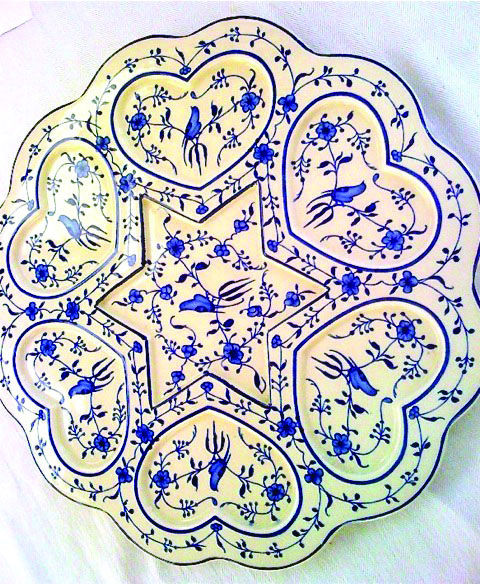
The late columnist David Broder called Passover “the finest of all festivals of freedom.” The Biblical story in Exodus of Moses leading his people out of slavery in Egypt has inspired countless people throughout history to seek their own liberation from oppression.
Jews observe the anniversary of this event with a special meal called a “seder.” The first day of Passover this year is March 26; since Jewish days begin at sunset, the seder takes place Monday evening.
“The purpose of the seder is to tell the story of the Israelites,” said Rabbi Debbie Israel, spiritual leader of Congregation Emeth in Morgan Hill. “It is read from a book called the ‘Haggadah’ (which means ‘the telling’) and is designed to be an experience where participants not only hear the story but live the story, using sight, smells, tastes and sounds.”
Because the seder takes place around the dinner table, foods that have deep symbolism are eaten. All participants share food on the seder plate, a large plate in the middle of the table.
• Matzah – representing the simple food of slaves. When the Israelites left Egypt, they had to leave in a hurry and the bread had no time to rise. This flat cracker-like food is at the heart of the weeklong holiday, when Jews are not permitted to eat bread or other flour or grains (wheat, barley, rye, spelt or oats), called “chametz” (food made from leavened grain flour).
• Karpas – a vegetable, usually parsley or celery, that represents springtime. The karpas is dipped in salt water, symbolizing the tears of the slaves.
• Maror – bitter herbs, horseradish, symbolizing the bitterness of slavery.
• Charoset – a mixture usually made of apple, nuts, cinnamon and grape wine, symbolizing the bricks the slaves were forced to use in building the pyramids.
• Zeroa – a roasted lamb or goat bone (some use a chicken bone), symbolizing the lamb offered in the temple sacrifice. Vegetarians use a beet, since zeroa is also a symbol of the lamb’s blood that was placed on the homes of the Israelites during their last night in Egypt.
Wine is also an essential part of the seder meal (though grape juice is permitted) because wine is a symbol of joy. Four cups (or sips from four cups) symbolize God’s four promises to the Israelites, as spoken to Moses: “I will free you from the burdens of the Egyptians and deliver you from their bondage. I will redeem you with an outstretched arm … I will take you to be My people, and I will be your God.” (Exodus 6:6-7)
Some families also serve hard-boiled eggs, again symbolizing springtime and the circular nature of life, also representing the festival sacrifice at the holy temple in ancient times.
In addition to reading from the Haggadah and eating the symbolic foods, at the halfway point of the seder a delicious dinner is served, including traditional “Jewish” foods such as matza ball soup.
As a special service to those who are affiliated with South Valley’s Congregation Emeth, the temple is offering a seder matching program. Members who are having a seder are matched with congregants who are looking to participate in a one. Also, Rabbi Israel has offered to teach members who have never led a seder before, guiding them through the rituals of the evening, so that all members have the opportunity to experience this festival of freedom. For more information, call (408) 778-8200 or visit www.Emeth.net.









